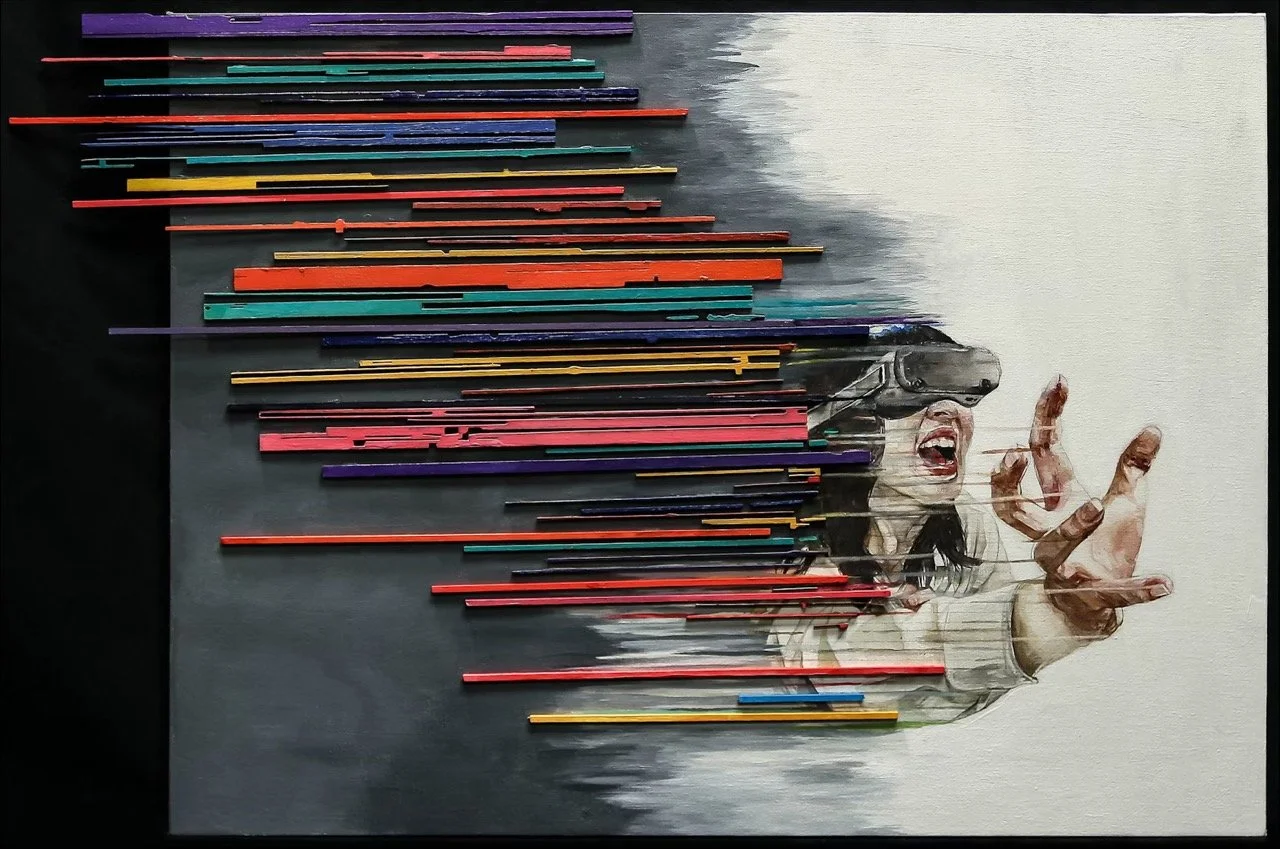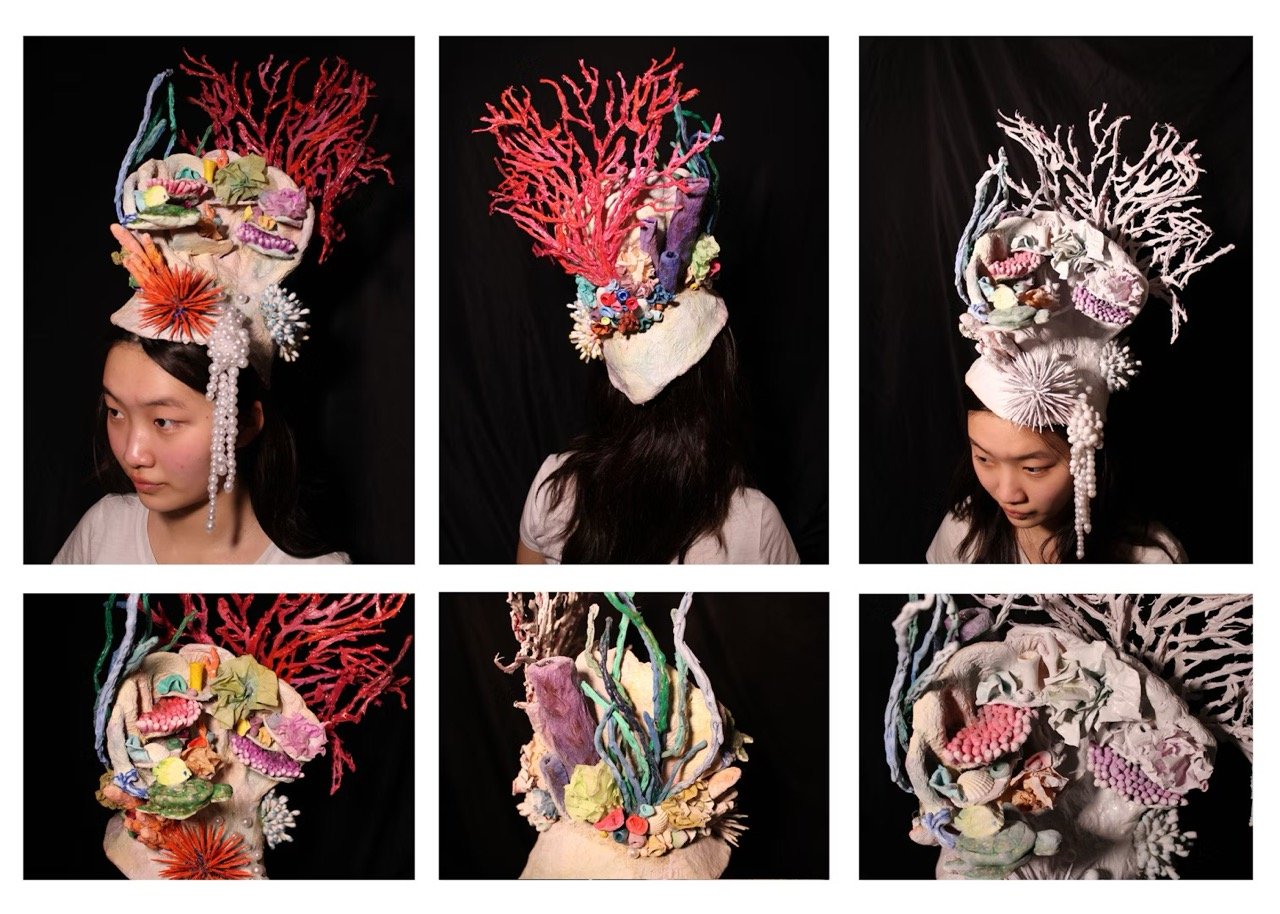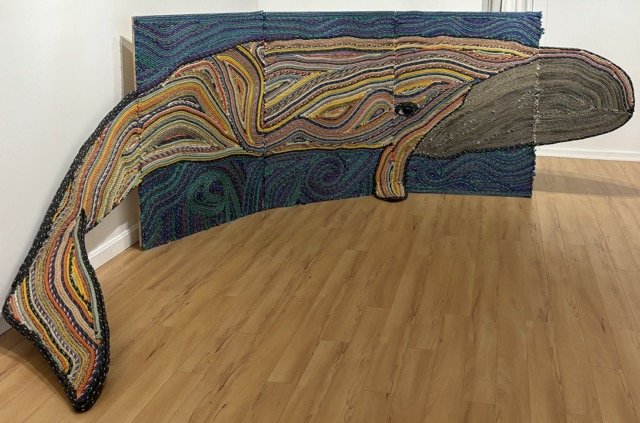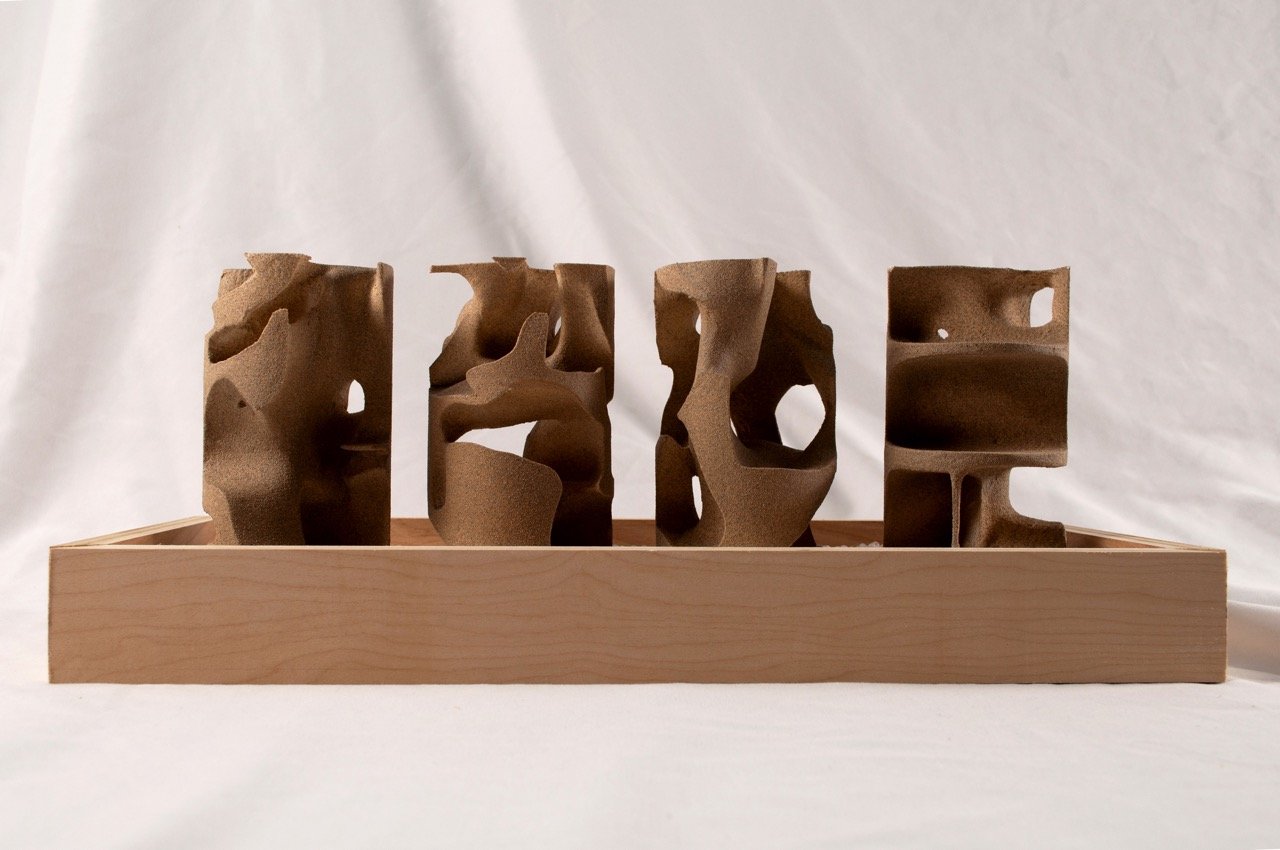This artwork captures the intersection of human ignorance and the escalating climate crisis. While severe flood is happening, the students' behavior shows how education, one of humanity's greatest tools, can often fail to address the gravity of environmental collapse. This piece invites viewers to reflect on our collective response to climate change.
Read MoreThis artwork explores the idea of maladaptive daydreaming as a subconscious escape from the realities of climate change. The rigid lines symbolize environmental crises—rising sea levels, pollution, and deforestation—trapping us in a world of inaction.
Read MoreThe Hunt/Shekar references the style of Persian miniatures and depicts the endangered Asiatic Cheetah–which once ranged broadly but survives only in Iran today–hunting Cape Hares in the night. The cheetah is leaping over a dried-up river, representing the loss of many of Iran's lakes. Rising through the valley in the mountains is a smoke cloud, a looming message that the countryside this cheetah is romping through will soon be destroyed
Read MoreThis quilt depicts the altered interactions between Great Lake fish species and their surrounding environment due to climate change. Three main ecological concepts are present in this quilt: northward range shifts, changes in the strength and duration of lake stratification, and the temperature-oxygen squeeze experienced by cold water fish. Cold and cool water fish are shifting their ranges north to continue living in their optimal water temperature while warm water fish are expanding into waters they previously were unable to occupy due to warming temperatures.
Read MoreSometimes I'll see reporters on the news describing a hurricane while apparently standing in the middle of it. I've always thought that these reporters had to be pretty fearless -- often, in the background, trees sway violently and waves crash against seawalls. This scene is so much more tame when watching it from the comfort of my home, hundreds of miles from where it's being recorded. It's easy to distance myself from the event and move on to something else.
Read MoreThis piece symbolizes the devastating effects of coral bleaching I learned in my freshman Earth Science class, where rising ocean temperatures cause corals to expel their algae, leaving them white and disrupting marine ecosystems. Fascinators, with their intricate and eye-catching beauty, seemed like the perfect medium to show the vibrance of coral reefs.
Read MoreDuring my senior year of high school, I undertook a capstone project that had to capture both my learnings and aspirations. One evening, I learned from the news about the decline in the right whale population due to ship strikes and fishing gear. The population is also finding it difficult to adapt to its warming environments.
Read MoreUnder our capitalistic framework of unrestrained growth, our architecture of carbon-producing machines, water-polluting materials, and energy-intensive climate control, has expelled nature from our spaces whilst exacerbating our role in climate change. The Global North, particularly, must rethink its increasing trends of hermeticism—environmental and beyond. These four models—resembling soil core tests—are spaces within a proposed research institution in the American Arid Lands dedicated to preserving and living with nature.
Read MoreThis idea was summoned when I was about 15 years of age, just finding out how much harm the earth takes in each day. I was learning about pollution, seeing wildfires start all over the globe, wars that kill everything around them. As a 15 year old, still finishing high school, I felt helpless. As if I was a little bunny watching my world burn. Unable to move, unable to run, knowing that it will kill everything including me in its sight.
Read MoreMy name is Sandy Hanna, my paintings deeply portray my views towards the climate crisis--There is hope if we fight. "The Pheonix" is a work that explores themes of grief and exploitation of the Mother. The blood of the mother burns; the Earth continues to be only a negligible chapter in the imperialists eyes.
Read MoreFor this painting I wanted to focus on the concept of Biophilic design. Not only is it more ecologically friendly than our current concrete landscapes, but it also represents a willingness to listen to and learn from the environment around us. Biophilic design focuses on creating structures that mimic and become a living part of the environment they preside in.
Read MoreAfter We’re Gone explores humanity’s environmental impact and the destructive habits driving us toward our own demise amidst the climate crisis. This illustrated futuristic vision warns of the consequences we face if we continue on our current path. Devoid of color, the black and white subject matter symbolizes how human actions are draining the Earth of its vibrancy
Read More










